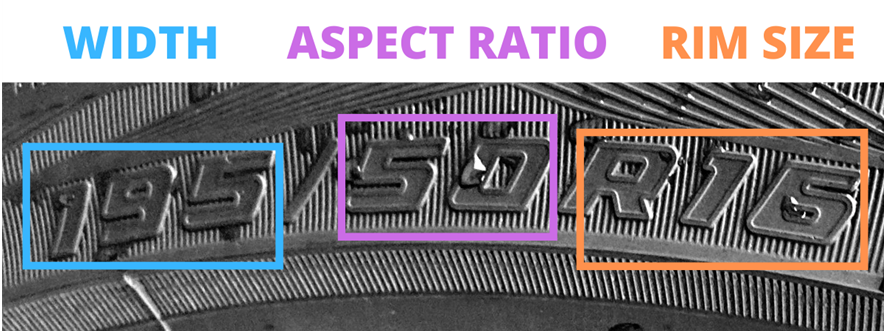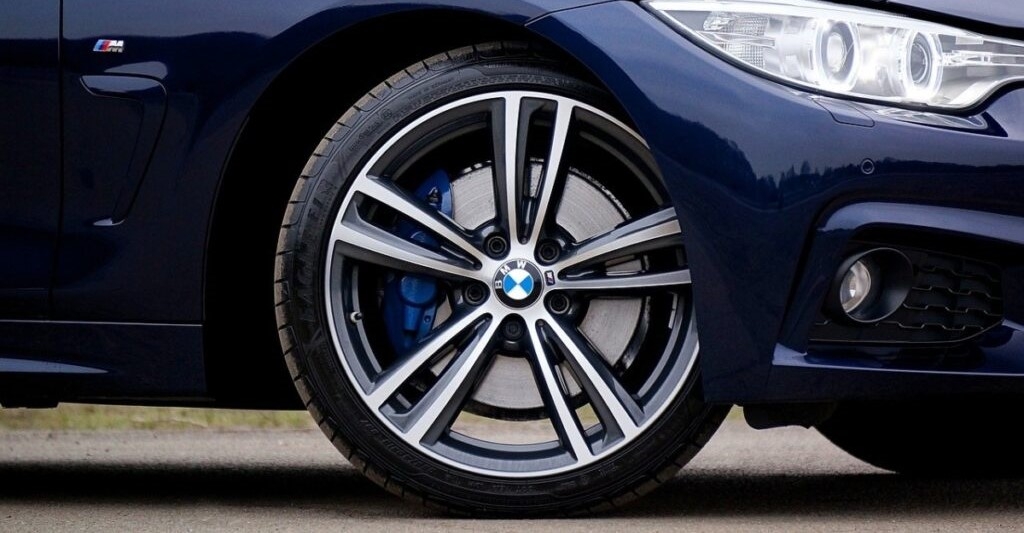If your car currently has 17″ alloy wheels, then you’re probably wondering if upping the size to 18″ is a good idea. In this article, I’ll go through all the considerations you need to make when choosing between bigger and smaller wheels so you can decide which size to go for.
The Quick Answer
Smaller 18″ alloys will have tires with a lower profile compared to the smaller 17″ alloys. The benefits of the 18″ alloys are that they result in sharper handling and look more aesthetically pleasing, however, the 17″ alloys are more comfortable, quieter and cheaper in comparison.
| 17” Alloy Wheels | 18” Alloy Wheels |
| Higher profile tires | Lower profile tires |
| Less sporty looking | Better aesthetics |
| More comfortable | Better handling |
| Less road noise | More road noise |
| Less expensive | More expensive |
Wheel and Tire Size
Before we jump into the comparisons between 17″ and 18″ alloys, we need to be clear on the connotations of changing the alloy wheel size.
Your wheel as a whole is of course made up of the alloy, and the tire. Whenever you change the size of the alloy, the tire size must also change to ensure that the whole wheel comfortably fits into the wheel arch.
You don’t always have to match the overall wheel size completely to the stock size, however you do need to make sure that it will fit. Changing the overall size of the wheel will impact the speedometer.
For example, if you switch from 17 to 18 inch alloys and keep the tire profile height the same, then the wheel will take fewer rotations to cover the same distance so your speedometer will say that the car is going slower than it actually is.
However, in most cases car owners will compensate for a larger alloy by having a lower profile tire, to avoid issues with the speedometer by keeping the overall wheel size the same.
Here are a couple of diagrams to demonstrate this point.


Tire Aspect Ratio
When we’re referring to the tire’s profile height, we’re actually discussing the aspect ratio. Tires all have three numbers on them to tell you what size they are.
- Width: refers to the width of the tread e.g. the area inside the wheel arch. Measured in millimetres.
- Aspect ratio: refers to the profile height as a percentage of the tread width.
- Alloy size: this is simply a number to indicate what size rims the tires are designed for.
Take the example below.
The width of the tread is 195 mm, the aspect ratio is 50% of the tread width so equals 97.5 mm and the tire is designed to fit a 16″ alloy.

It’s important to remember that the profile height is an aspect ratio, and not a measurement that can be taken in isolation. For example, a 205/40 tire does not have the same profile height as a 225/40 tire.
The aspect ratio is a percentage of the width so means nothing unless you have that first number. In this example, the 205/40 tire has a profile height of 82 mm, whereas the 225/40 tire has a larger profile height of 90 mm. In each case, the profile height is 40% of the first number (205 or 225 in this example).
Why Does Profile Height Matter?
The reason that I’m explaining all this is because it’s actually the change in the tires aspect ratio (profile height) when going from a 17″ to 18″ alloy which makes a difference, as well as the alloy size itself.
Let’s use a 2022 Ford Focus as an example. The car comes with several wheel sizes including 17″ and 18″ options.
- The 17″ alloys have a 235/45 R17 tire size = overall circumference of 79.49 inches.
- The 18″ alloys have a 235/40 R18 tire size = overall circumference of 79.92 inches.
There is a slight difference in the overall circumference but they are very similar so it does not have a big effect on the speedometer. This is of course achieved by having a 235/40 tire size as opposed to a 235/45 tire size which equates to a 12 mm (0.47 inch) difference in tire wall height.
Now let’s take a look at what differences these changes in alloy and tire size actually create.
Unsure what width to go for? Check out my comparison between 8″, 8.5″ and 9″ wide wheels.
Appearance
One of the main reasons why car owners choose larger alloys is because they look better.
Tires aren’t the most aesthetically pleasing part of a car, particularly when compared to the alloys. Hence, having larger alloys and lower profile tires tend to make a car look nicer. This is why manufacturers get away with putting larger alloys on higher trim levels, or selling them as upgrades because they look more expensive.
WINNER: 18″ Alloys

Comfort
An advantage of 17″ alloys over 18″ alloys is that they’ll result in a more comfortable ride. Since there is more tires wall to cushion potholes and bumps, the 17″ alloys will feel smoother in comparison to the 18″ alloys which will feel harder.
Consider the type of roads you’ll be driving on to decide if this is a huge factor to consider. If you’re mostly driving on good quality roads when you’ll likely not notice any issue with 18″ alloys which have a smaller sidewall. However, if you’re driving through country lanes or over bumpy ground frequently then you’ll prefer the feel of 17″ alloys. The extra sidewall height also makes them less likely to blow out due to a pothole.
WINNER: 17″ Alloys
Noise Level
Smaller alloys with higher profile tires tend to be quieter than larger alloys with lower profile tires. Chunkier tires put more rubber between the road and the people inside the cars which tends to quieten the road noise.
The difference isn’t dramatic, and when you look at the table below which lists some popular tires and their noise rating, in some cases there is no difference between the aspect ratios and at most it is rated as a single decibel difference.
WINNER: 17″ Alloys
| Tire | 225/45 R17 Tires | 225/40 R18 Tires | Difference |
| Goodyear Eagle F1 Asymmetric | 70 db | 71 db | 1 db |
| Pirelli Cinturato P7 | 71 db | 72 db | 1 db |
| Michellin Primacy 4 | 68 db | 68 db | None |
| Continental EcoContact 6 | 72 db | 72 db | None |
| Bridgestone Turanza T005 | 71 db | 72 db | 1 db |
| Dunlop SP Sport Maxx RT2 | 71 db | 71 db | None |
Fuel Consumption
Switching from 17″ to 18″ alloys is unlikely to cause a significant reduction in fuel economy, however the larger alloys are slightly less fuel efficient.
Larger alloys are heavier which means more fuel will be needed to more the car the same distance at the same speed. However, the difference is not very much at all so this is probably not the most important factor to consider.
When looking at the fuel consumption rating of popular tires in the table below, you’ll notice that for some models, the 18″ versions of the tires are rated lower than the 17″ versions. For some models though there is no difference at all.
WINNER: 17″ Alloys
| Tire | 225/45 R17 Tires | 225/40 R18 Tires | Difference |
| Goodyear Eagle F1 Asymmetric | C | D | 1 Grade |
| Pirelli Cinturato P7 | C | C | None |
| Michellin Primacy 4 | B | B | None |
| Continental EcoContact 6 | A | A | None |
| Bridgestone Turanza T005 | B | B | None |
| Dunlop SP Sport Maxx RT2 | C | C | None |
| Yokohama Blueeath GT AE51 | B | C | 1 Grade |
Performance
Some car owners look to larger alloys to give them a boost in performance. Having 18″ instead of 17″ alloys will improve cornering and stability, but it will add more weight which can actually reduce the performance.
When increasing the alloy size and hence, decreasing the sidewall height, the steering will feel sharper which will improve the overall handling to give the car a sportier feel. When making the change from 17″ to 18″ alloys, you’re unlikely to notice much of a difference when daily driving though.
WINNER: Draw
Want to learn more about the pros and cons of small and large wheels? Check out my complete guide to why wheel size matters to learn more.

Price
If you’re buying aftermarket alloys then you’ll notice that the 18″ versions are always more expensive than the 17″ versions. On average, a set of 18″ alloys costs around $100-$200 more than a 17″ of the same alloys. Tires designed to fit smaller 17″ alloys as opposed to 18″ alloys are also around $10-$20 cheaper per tire.
WINNER: 17″ Alloys
Here are some more articles you might find useful:


Very well written article. I’m currently facing a similar dilemma. I’ve had 215/45 r18 for a few years but my rims are cheap. I’ve had to fix 3 dented wheels due to minor potholes and now another wheel is dented again.
I found some used OEM 17” wheels and decided that I would pair those up with 215/55 r17 tires. They actually will be 0.6” bigger than my old setup.
This should help cushion my ride and reduce the chance of getting dents. It’s just important to verify the amount of room you have to accommodate the bigger tire if you plan on doing what I did